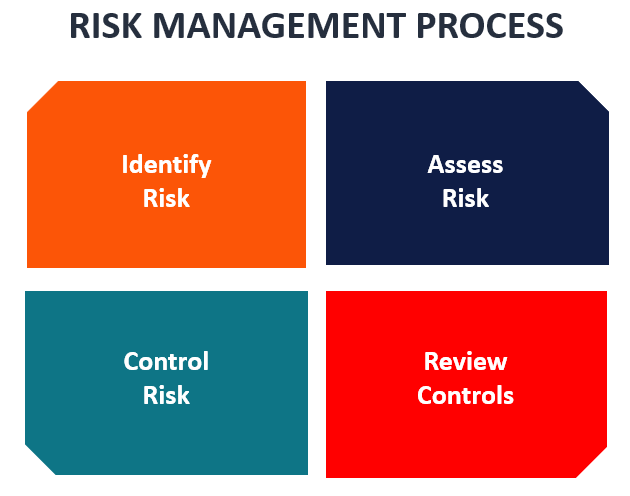A Comprehensive Guide to Understanding the Importance of Risk Management
A Comprehensive Guide to Understanding the Importance of Risk Management
Blog Article
Discovering the Significance of Risk Management for Effective Decision-Making Methods
In the detailed world of organization, Risk Management emerges as an important consider the decision-making procedure. The capability to recognize potential dangers and chances, and strategize appropriately, can mean the distinction between success and failure. With tools such as SWOT and PESTEL, companies are outfitted to make informed choices, fostering resilience and flexibility in an ever-changing setting. Wondering how this works? Allow's unpack the dynamics additionally.
Comprehending the Principle of Risk Management
Risk Management, a critical part in decision-making, is typically misinterpreted or oversimplified. Generally, it describes the identification, analysis, and prioritization of risks to lessen, keep an eye on, and manage the possibility or influence of unfavorable occasions. Nevertheless, it's not just regarding preventing negative results, yet also about identifying potential possibilities. Risk Management includes structured and self-displined methods, making use of information and insightful analyses. It requires a thorough understanding of the organization's context, objectives, and the potential risks that can combat them. From economic unpredictabilities, legal liabilities, tactical Management errors, to crashes and natural disasters, it attends to different threats. Significantly, effective Risk Management is not stationary; it's a continual, positive procedure that develops with changing situations.
The Duty of Risk Management in Decision-Making Processes
In the world of tactical preparation and organization procedures, Risk Management plays an essential function in decision-making processes. Risk Management thus comes to be an essential device in decision-making, assisting leaders to make informed options based on an extensive understanding of the threats included. Risk Management serves as an essential part in the decision-making processes of any organization.

Exactly How Risk Management Boosts Strategic Preparation
In the context of tactical planning, Risk Management plays an essential function. Starting with the identification of possible threats, it additionally includes the implementation of Risk reduction steps. The function of Risk Management is not static but vibrant, as it demands constant monitoring and adjusting of strategies.
Identifying Prospective Risks

Applying Risk Reduction
Having actually established the importance of identifying prospective dangers, the next step is to check out Risk reduction. This procedure involves establishing and applying techniques to handle determined dangers successfully. It is a critical element of tactical preparation as it improves decision-making by minimizing potential negative results. Risk reduction strategies can vary from Risk avoidance, Risk transfer, to risk decrease. Each technique should be tailored to the particular Risk, considering its possible impact and the organization's Risk tolerance. original site Efficient Risk mitigation requires a deep understanding of the Risk landscape and the possible influence of each Risk. This understanding makes it possible for companies to prioritize threats and assign resources effectively, guaranteeing that one of the most substantial dangers are addressed initially.
Surveillance and Adjusting Methods
Though Risk reduction is a crucial action in calculated preparation, continual monitoring and modification of these methods is just as essential. This continuous procedure allows organizations to determine new risks and reassess existing ones, making sure the applied approaches remain reliable in the ever-changing organization atmosphere. It additionally provides an opportunity to evaluate the success of the Risk Management measures, enabling modifications to be made where needed, additional enhancing tactical planning. Reliable surveillance and change need making use of analytics and key efficiency indicators (KPIs) to measure performance. These devices give valuable data-driven insights that can notify calculated decision-making. As a result, tracking and readjusting you could try this out Risk Management strategies is an important element for boosting a company's durability and critical preparation.
Instance Researches: Successful Risk Management and Decision-Making
In the world of service and finance, effective Risk Management and decision-making usually offer as the pillars of thriving ventures. These situations highlight the value of astute Risk Management in decision-making processes. These instances emphasize the critical role of Risk Management in tactical decision-making.
Tools and Strategies for Effective Risk Management
These devices, such as Risk signs up and warmth maps, help in identifying and examining possible risks. Risk action strategies, a key component of Risk Management, include approving, staying clear of, moving, or mitigating dangers. With these tools and methods, decision-makers can navigate the complicated landscape of Risk Management, thereby assisting in educated and efficient decision-making.
Future Trends in Risk Management and Decision-Making Techniques
As we discover the vast landscape of Risk Management, it ends up being noticeable that the strategies and tools utilized today will proceed to progress. Future trends point towards an increased reliance on modern technology, with man-made knowledge and artificial intelligence playing significant roles. These technologies will certainly enable organizations to anticipate possible dangers with greater precision and make more informed choices. Additionally, there will certainly be an expanding emphasis on resilience, not simply in managing threats but additionally in recovering from adverse scenarios. The concept of Risk society, where every participant of an organization is mindful and included in Risk Management, will obtain much more importance. These patterns advertise an even more inclusive and proactive strategy towards Risk Management and decision-making.
Final thought

Risk Management hence becomes a crucial device in decision-making, assisting leaders to make informed choices based on a thorough understanding of the threats entailed. Risk reduction methods can vary from Risk evasion, Risk transfer, to run the risk of decrease (importance of risk management). Efficient Risk reduction requires a deep understanding of the Risk landscape and the possible effect web link of each Risk. Risk response strategies, an essential element of Risk Management, involve approving, preventing, moving, or mitigating risks. The principle of Risk culture, where every member of a company is aware and entailed in Risk Management, will get a lot more prominence
Report this page